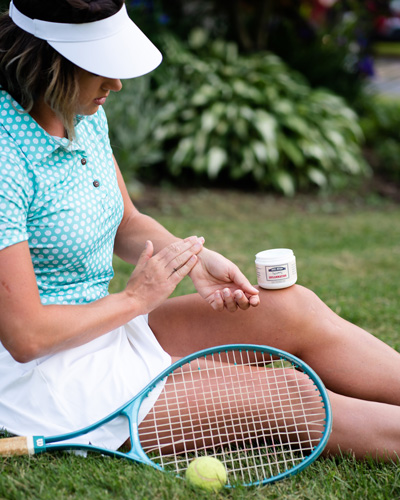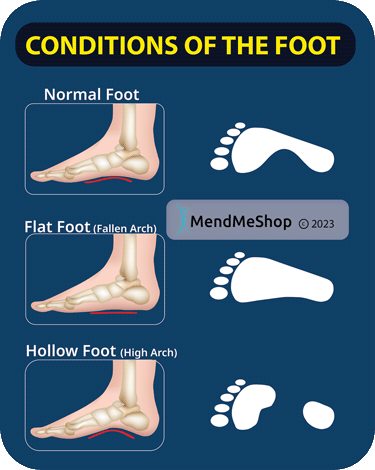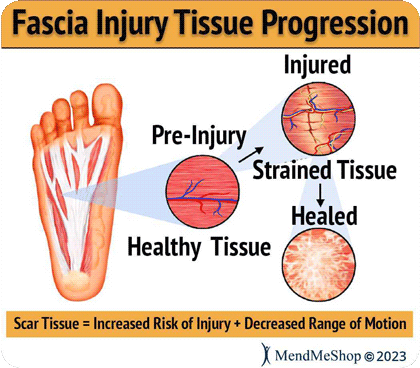Turf Toe
Turf toe is typically known as a sprain of the lower ligaments of the largest joint found in the big toe. However, it seems that the specific description now includes the "plantar complex" (this is the plantar plate, collateral ligaments and tendons surrounding the base joint of the big toe).
The term turf toe refers to an injury of any soft tissue structure in the plantar complex, such as the plantar plate or a collateral ligament. These injuries can vary in severity — from stretching of the soft tissue to partial tearing, and even total dislocation of the MTP joint.
Turf Toe FAQ
What is Turf Toe?
Turf toe is also sometimes known as "Metatarsalgia" and "Metatarsophalangeal Joint Sprain". The Metatarsophalangeal Joint is the joint that connects the base of the big toe to the rest of the foot. The injury can range from simple sprains to dislocations of the joint.
Turf toe is a painful injury that can sideline a football player and happens when you bend your big toe too far. When this happens, tendons and ligaments in the big toe joint start to tear and this can be quite debilitating for a short while. Typically, the injury heals in a fairly short period with adequate rest and ice; however there are occasions where turf toe does not heal and as such surgery is required.
Turf toe is common among American football players because they frequently push off their toes into a sprint or make sudden movements while running.
What & Where is the Metatarsophalangeal Joint?
The big toe consists of two joints. The largest of the two is the metatarsophalangeal joint (MTP), where the first long bone of the foot (metatarsal) descends from the foot arch to meet the first bone of the toe. In turf toe, the MTP joint is injured. The MTP joint is the large joint closest to the base of the big toe.
MTP = Metatarsophalangeal Joint
What Significant Structures Surround the MTP Joint?
The MTP is a very important joint that handles large forces when the heel is raised off the ground. The following structures assist in helping prevent dislocation of the MTP joint:
- Plantar plate. This thick, fibrous tissue under the MTP joint prevents the big toe from bending too far upward (dorsiflexion).
- Collateral ligaments. Located on each side of the big toe, collateral ligaments connect the phalanx bone to the metatarsal and prevent the toe from going too far side to side. It is the collateral ligaments that are commonly strained in a traditional turf toe injury (notwithstanding that the tendons and plantar plate can also sustain injury).
- Flexor hallucis brevis. This tendon runs under the first metatarsal bone and attaches to the proximal phalanx. It provides strength and stability to the big toe during push-off motions.
- Sesamoids. These two small bones are enveloped in the flexor hallucis tendon and help it to move more easily. In addition, the sesamoids provide stability to the MTP joint by helping to bear weight placed on the forefoot.
What Are Symptoms of Turf Toe?
Turf toe symptoms range from mild to severe. If a sudden injury caused turf toe, you may have heard or felt a “pop” when the injury happened. Pain from a sudden injury usually comes on right away.
Turf Toe can also happen over time due to repetitive upward stresses on the big toe; a good example would be a ballet dancer since they spend a lot of times jumping and running on their toes. In such cases, symptoms will be hardly noticeable to start with but worsen over time. Regardless of how you got it, common symptoms of turf toe are as follows:
Pain & Tenderness in the Big Toe
The pain can be at a constant level or in some cases you may not feel much pain unless you press on the toe or attempt to put your weight on it.

Swelling & Bruising in the Big Toe
If you have recently experienced turf toe, the base portion of the big toe will likely be swollen. You might also see bruising in the area that can encompass the swollen toe and extend upward toward the top of the foot.
Loss of Range of Motion in the Big Toe
If you are suffering from a severe case of turf toe, you may not be able to move the big toe or bend it up or down. You may also feel like the foot is weak and have trouble walking without a limp.
Loose or Stiff Feeling in the Big Toe Joint (the metatarsophalangeal joint)
There may be a feeling of tightness in the joint at the base of the big toe, OR there may be a feeling of looseness and/or instability. It is possible that the joint may have popped out of place, which is a good reason indeed to go get a doctor to look over it.
Who Is At Risk of Getting Turf Toe?
People That Play Sports on Artificial Surfaces (fake grass or "astroturf" for example)
Most instances of turf toe occur when playing sports - more particularly, when playing sports on artificial surfaces like fake grass. When the foot grips the field surface and the body weight is largely on the toe, an artificial surface is less likely than natural grass to let the shoe slip backward to relieve pressure on the big toe. In some instances this bends the big toe joint (the metatarsophalangeal joint) upwards to the point where the ligaments beneath the toe get pulled too far and start to tear.
People That Wear Very Light, Flexible Footwear
The sole of a shoe will take some pressure off of the bottom ligaments of the big toe, as shoe soles are at least somewhat rigid - helping keep the toe area from pushing up too far. Modern shoes are at times, designed to be very light and offer much less rigidity in the sole. For people that wear light shoes with little sole support, there is less rigidity from toe to heel on the base of the foot; as such, they are at increased risk of bending the big toe too far upward. These people are more likely to get turf toe when compared to a person that is wearing shoes with a more rigid sole.[1]
How Long Does It Take To Heal From Turf Toe?
This is very much dependent on the severity of the injury. For grade 1 sprains, full recovery should be achieved in a matter of weeks, whereas a grade 3 sprain could take 6 months or more. Note that surgery may also be required for the most severe cases (ie. surgery will typically be recommended for tendon ruptures, major ligament tears, bone fractures) .[3]
What Causes Turf Toe?
It occurs when the big toe is bent over severely, over-extended and the foot is driven into or caught in the ground. It is usually an injury of athletes such as rugby or football players.
If the pain persists or becomes severe as time goes on, surgery may be necessary to repair torn ligaments and stabilize your big toe joint.
Turf Toe Injury Severity
Much like a sprain or strain, there are 3 grades of severity of turf toe:
- Grade 1. The plantar complex has been stretched, causing pinpoint tenderness and slight swelling.[2]
- Grade 2. A partial tearing of the plantar complex causes more widespread tenderness, moderate swelling, and bruising. Movement of the toe is limited and painful.[2]
- Grade 3. The plantar complex is completely torn, causing severe tenderness, severe swelling, and bruising. It is difficult and painful to move the big toe.[2]
Can I Expect to Fully Recover From a Turf Toe Injury?
"In over 85% of sportspersons a return to full sporting activity can be expected. Some intermittent symptoms may persist however including minor toe stiffness and swelling."[3]
When to use a TShellz Wrap®:
- After swelling and inflammation are reduced.
- BEFORE getting out of bed in the morning. BEFORE going to bed at night.
- BEFORE exercise, workouts or activity of any kind to warm up the foot and increase length & elasticity of muscles, ligaments & tendons at the base of the foot. Increased elasticity and length of soft tissue is intended to help reduce risk of of re-injury.
- AFTER surgery (once the skin wound has healed over and your physician approves) to boost blood circulation, helping surgically repaired tissues rebuild for long-term health and minimize scar tissue growth at the surgery location.
- Anytime BEFORE you feel you might undertake activity that will put significant strain on your foot.
- Any other situation where you need to increase blood flow to soft tissue in the foot to relax the area, relieve pain / spasms, prevent re-injury and enhance flexibility of tissue in the treatment area.
When to use a Cold Compress or Ice Pack:
- 24 to 72 hours after your initial injury or when you first notice pain and swelling to stop further damage to tissue, relieve pain, and decrease swelling.
- After exercise, workouts or activity of any kind to prevent re-injury.
- Before and after surgery during rehabilitation to control pain and swelling for both pre-surgery and post-surgery.
- Anytime you feel that soft tissue (muscles in particular) has been over-extended, over-worked, twisted, strained or sprained causing pain and swelling.
- Anytime you have swelling, sharp throbbing pain or inflammation.
- Any other situation where you need to draw the pain and inflammation out of the area.

MendMeShop Arnica Infusion Pain Relief Cream
Broken Toe Pain Keeping You Awake?
Pain Got You On Edge?
Temporary Relief from Serious Pain For People Who Are Serious About It!

MendMeShop Sesamoid TShellz Wrap®
This wrap is designed to:
- increase extensibility & flexibility of metatarsals/sesamoid/toe areas during treatment & for a short while after
- increase blood flow in the application area
- treat the TOP, BOTTOM or SIDE of the foot
What Kind of Foot Do You Have?
It's easy to find out! Find some cardboard, dip your foot in water, and have fun making a 'foot print'. This is a simple and easy way of analyzing how much of your foot makes contact with the floor. Orthopedic insoles or Orthotic shoes are often recommended to ensure a more optimal walking technique and to support the feet appropriately if you suffer from hollow foot or flat footedness.
Normal Foot / Arch Position
If approximately 'half of your foot' stays in contact with the ground when you are walking, you have what is described as a 'normal' arch. The arch of your foot supports your body during ALL your daily activities.
Flat Foot / Low Arch Position
This describes a foot with a low arch, or even no arch. If someone has a flat foot, they can be prone to internal rotation of the foot, which can in turn lead to other problems in the body. Flat Footedness can occur over time, as the body experiences wear or tear but can also occur as a result of an underdeveloped arch during childhood. Needless to say it is a very common phenomenon.
Hollow Foot / High Arch Position
If the arch of the foot is too aggressively pronounced you may be diagnosed with Hollow Foot. This condition can cause instability during any kind of movement. High arches are much less common than having a flat feet and can arise due to issues with the nerves or bones.

Scar Tissue & Fibrotic Adhesions
All connective tissue is living tissue; tissue requires a blood supply and is continually in a state of regeneration. Any and all connective tissue has the potential for injury and inflammation. Injuries can be small such as in the case of a strain, or injuries can be large tears or even avulsions (complete tearing). Once an injury is experienced, the area will experience both inflammation and the growth of scar tissue (otherwise known as adhesions).
The occurrence of scar tissue is a regular part of life. Scar tissue forms as part of the progression after injury occurs. Scar tissue essentially 'fills in the gaps' after a cut, tear or wound presents itself in the body. Scar tissue is composed of the protein, collagen; it is widely known in the medical community that scar tissue is weaker and less flexible than original tissue.
- Normal/original connective tissue is made up of collagen, but this collagen is aligned in a specific direction with each strand in alignment. This results in the connective tissue having a strong tensile strength while also having excellent flexibility and extensibility.
- Scar tissue is made up of a 'criss cross/ random' formation of collagen and attaches to everything in the area. You can likely imagine the result of a patch of scar tissue; the effect is similar to pouring extremely sticky glue in your hair. It interrupts everything and is disruptive to the function of the connective tissue. The caveat is that the scar tissue does its job - it binds tears together. You definitely want the tear to heal, but it is important to ensure the scar tissue goes away despite the fact that it does not go away easily.
- After scar tissue forms, although the wound or cut is now closed (and less prone to infection), the area of tissue itself is inferior in functionality to what it replaced.
Continuous re-injury and build-up of scar tissue makes it more likely that you will wind up with chronic pain, reduced Range of Motion or even arthritis (permanent damage).
Heal Quickly to Minimize Scar Tissue Growth & Reduce Re-Injury Risk

For tissue injuries, it is important to heal quickly and completely; this will help minimize the build up of scar tissue. If you don't, your tissue injury may be the start of a long term chronic injury resulting in a loss of Range of Motion and joint atrophy.
The human body will use scar tissue as a temporary solution and will try to build the scar tissue as fast as possible to heal tears in soft tissue (muscles, tendons). Scar tissue can form fast to bring together the edges of a tear, but working fast doesn't mean that the job's done right. When scar tissue forms it doesn't come together as neatly as regular (healthy) tendon/ligament tissue would. Scar tissue fibers will lay down over top of your tear in a cluttered, messy and jumbled up way.
This is how scar tissue works - it is messy and inelastic. The scar tissue that forms in your soft tissue will be unorganized and won't line up properly with the healthy tissue surrounding the tear. This scar tissue will attach to everything in and around the tear including the surrounding healthy tissue as well. This results in a long-term fusing together of everything the scar tissue touches, reducing your ability to move and making the injury even more painful!
The longer a soft tissue injury remains, the more scar tissue is likely to build up in and around the injury location. This is why it is critical to treat your injury quickly without delay. Continuous re-injury and build-up of scar tissue while staying active or going back to work means you will experience a greater risk of winding up with on-going, chronic foot pain and overcompensation injuries to the hips, knee(s), and or back.
FREE SHIPPING ON ALL PRODUCTS CURRENTLY ENABLED
Product specialists are available 9:00 am to 5:00 pm Eastern Standard Time Monday to Friday.
If any question or concern arises, call us or simply send us an email at any time (we check our emails constantly all throughout the day and night.. even on holidays!). We will respond as soon as possible.
North America Toll Free 1-866-237-9608
Outside North America +1-705-532-1671
Please be aware that this information is neither intended nor implied to be a substitute for professional medical advice. All testimonials and comments reflect the real life experiences of individuals that used our products, however, individual results may vary. Always seek the advice of your physician or other qualified health provider before using any of our outstanding products to make sure they are right for you and your condition or if you have any questions regarding a medical condition.
For more information, call us via: 1-866-237-9608 or send us an email. View our Privacy Policy.
The terms Inferno Wrap®, Freezie Wrap®, T-Shellz® and Mendmeshop.com® are registered trademarks of In.Genu Design Group Inc.
All images shown are exclusive Copyright© 2006 - 2025 AidMyPlantar.com.
Sources:
1. (2023) Turf Toe - Foot - Conditions - Musculoskeletal - What We Treat - Physio.co.uk. Retrieved April 20, 2023, from https://www.physio.co.uk/what-we-treat/musculoskeletal/conditions/foot/turf-toe.php
2. (2023) Turf Toe - OrthoInfo - AAOS. Retrieved April 20, 2023, from https://orthoinfo.aaos.org/en/diseases--conditions/turf-toe
3. (2023) Turf Toe Treatment | Private Surgeon London | London Foot and Ankle. Retrieved April 20, 2023, from http://www.londonorthopaedicsurgery.co.uk/sports-injuries-fractures/turf-toe/